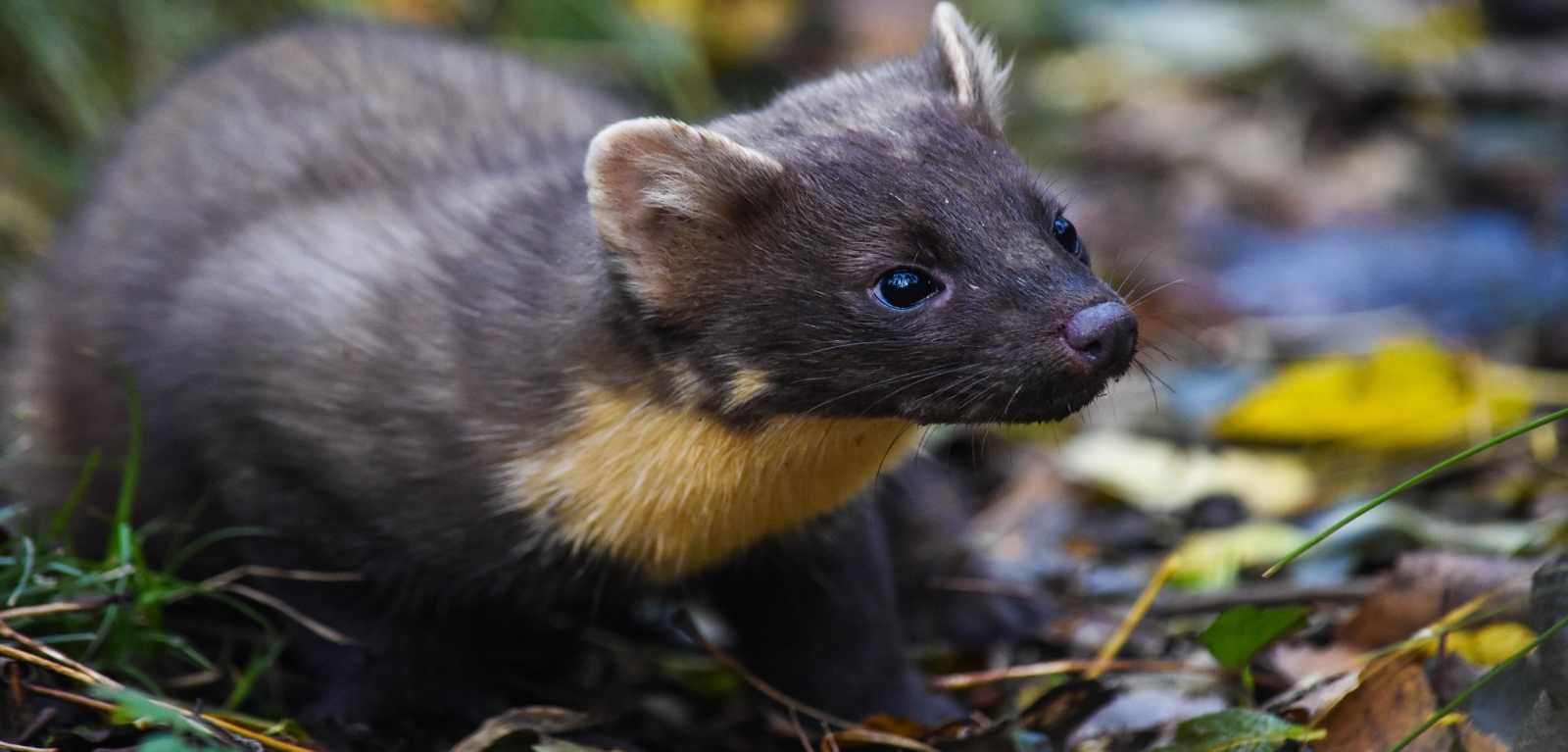Research finds human modification of natural landscapes risking future survival of native carnivores
New research led by Queen’s University Belfast has found that poor management of forests and natural landscapes may be driving the native predators we are trying to conserve into conflict with humans, risking their recovery and future survival.

The research shows recovering native predators, such as the pine marten, are being pushed into conflict with humans due to a lack of natural dens in human modified landscapes, such as commercial conifer plantations.
The research, led by Dr. Joshua P Twining from the School of Biological Sciences at Queen’s University, has been published in Wildlife Biology.
Native predator populations are extremely important for healthy functioning ecosystems; however, they are currently a fraction of their natural size globally, due to a long-storied decline driven by human persecution and habitat loss.
For the first-time in human history predator populations in parts of Europe are starting to recover in response to protective legislation and conservation measures. However, we still did not know how they will survive in landscapes that have been greatly changed and altered by humans in their absence, until now.
To conduct their study, the researchers monitored the population demographics and denning behaviour of the European pine marten in two contrasting habitats that represent the last habitats available to the species in the landscapes of Britain and Ireland: a natural old-growth woodland (an ideal habitat, now only 0.1 per cent of cover) and a modern human-modified landscape (available habitat, over 75 per cent of our limited woodland cover).
The study found that the pine marten survives in human modified landscapes, such as those presented in commercial plantations, by making use of the wider landscape in habitats that are often overlooked and undervalued: scrub, heath and hedgerows forming property boundaries. They find refuge in underground and man-made structures such as stone walls, rocky crevices, log piles and abandoned buildings.
In the natural old-growth woodland, the pine martens rarely left the forest, and 99 per cent of dens were found above ground in natural denning sites, in tree cavities and ivy crowns of veteran native trees. In addition, the natural woodland supported a healthy high-density population of pine marten, with an even sex ratio and age structure.
This contrasts with results from human modified landscapes, where pine martens lived at significantly lower densities, approximately a quarter of that observed in the natural old-growth forest. As well as living at lower densities, the population in the commercial plantation had male biased sex ratios with fewer kits reaching maturity, suggesting that adapting to survive in these human-modified landscapes comes with significant costs to life.
The discovery that most of the pine martens living in human modified landscapes were male raises concerns for the pine marten as it suggests that the lack of natural above ground dens and refuge in human-modified landscapes may leave smaller female pine martens and their kits vulnerable to predation by larger predators such as the red fox.
Commenting on the findings, Dr Twining, Researcher from the School of Biological Sciences at Queen’s University, said: “In a modern world that is daunted by environmental crisis and ecological collapse, it is more critical than ever to realise the benefits of restoring top-down effects to ecosystems. This is especially true in Britain and Ireland where we have caused the extinction of all our apex predators and continue to persecute the remaining, such as the red fox and pine marten.
"The recovery of the pine marten should be welcomed as it can help restore ecosystem function and conserve one of our favorite native animals. To fulfill societal ambitions of supporting biodiversity and healthy ecosystems we must improve how we manage our natural landscapes and change current forestry practices focused on the production of timber, at the cost of biodiversity value.”
The authors suggest, in the short-term, the wide-spread deployment of artificial den boxes in commercial conifer plantations may mitigate some of the potential for human-wildlife conflict as the species continues to recover. However, a long-term solution requires consideration of the key landscape features required by our recovering native carnivores. Legislative action to increase native woodland cover and upgrade outdated forestry practices; such as the ending of clear felling and restoring of old-growth conditions and structural complexity to existing plantations are necessary first steps, if we are to achieve the societal ambition of preserving biodiversity in our rapidly changing world.
Media
Media inquiries to comms.officer@qub.ac.uk